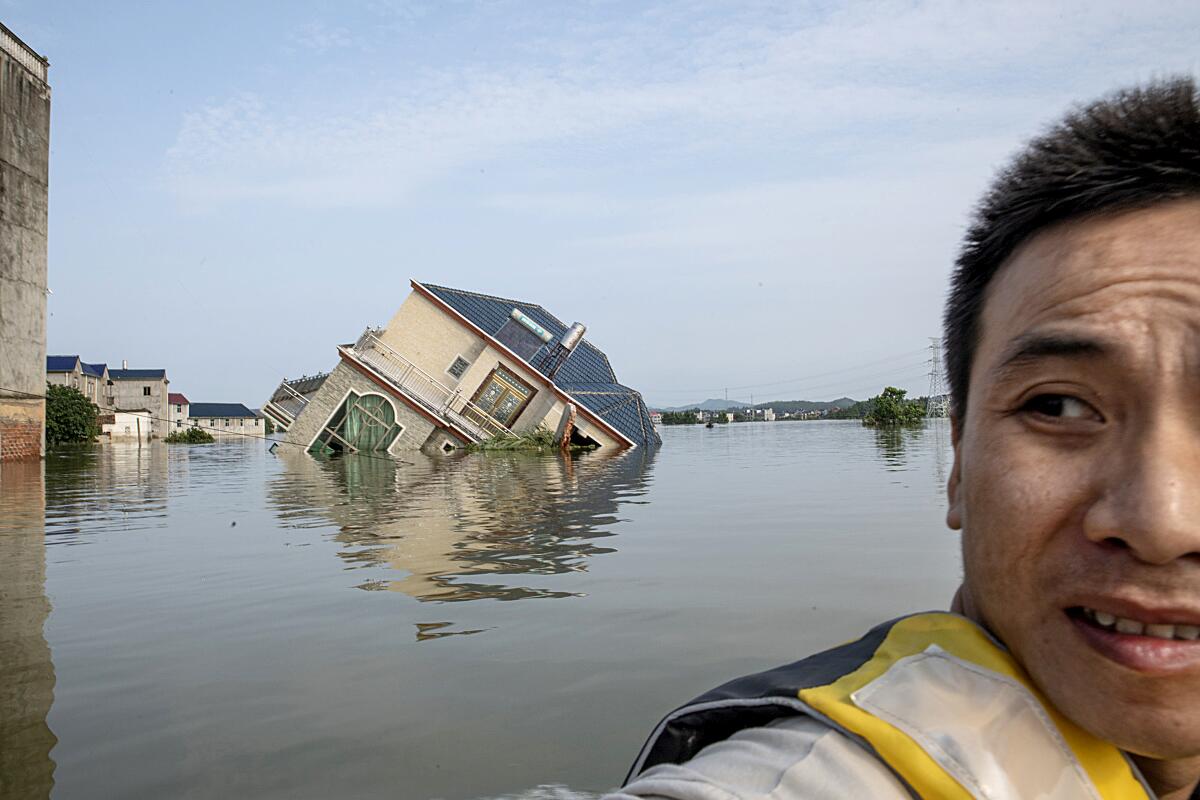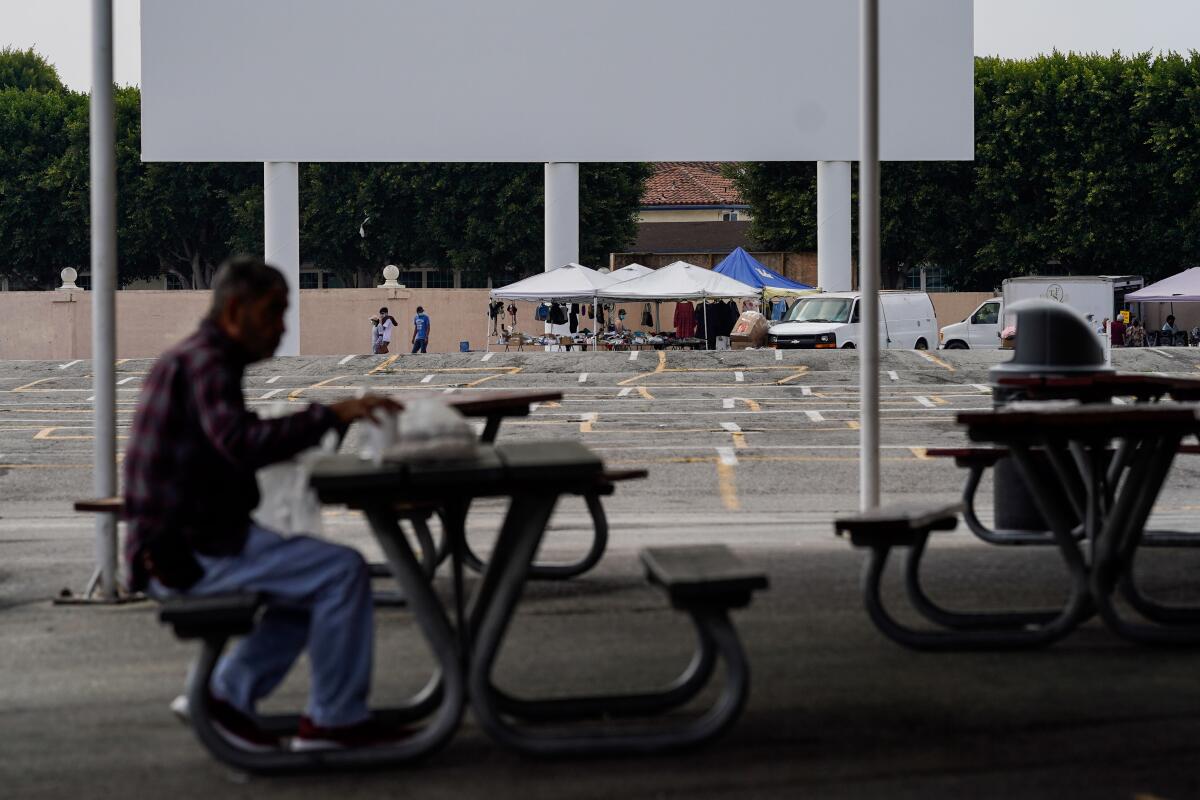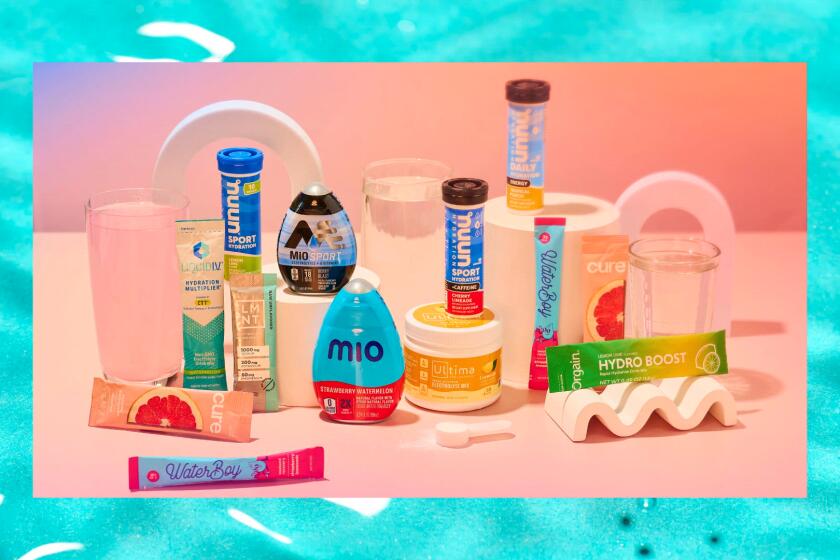Coronavirus Today: Backing off his own benchmarks
Good evening. We’re Diya Chacko and Sam Schulz, and it’s Friday, July 17. Here’s the latest on what’s happening with the coronavirus, plus ways to spend your weekend and a look at some of the week’s best stories.
A month into his stay-at-home order and under pressure to lift restrictions, Gov. Gavin Newsom drew a line in the sand: Before California could safely reopen, it needed to be able to test everyone with COVID-19 symptoms and trace the contacts of those with confirmed infections.
Three weeks later, he began reopening businesses before meeting his own benchmarks.
Dr. Mark Ghaly, the state’s secretary of health and human services, says he felt confident at the time that California was adequately testing symptomatic patients. But even as counties attested to their readiness for reopening, 17 acknowledged in their applications that they did not meet requirements for trained contact-tracing staff, and more than two dozen hadn’t hit targets for daily testing thresholds. Many said they planned to train more workers to investigate cases or boost testing. The state said those plans sufficed — a decision now coming under scrutiny as the coronavirus surges unchecked.
Since California began reopening in May, hospitalizations have more than doubled, deaths have nearly tripled and the state has surpassed 350,000 COVID-19 cases.
On Thursday, Los Angeles County reported more than 4,500 new coronavirus cases, shattering the record for the highest single-day increase in new infections. (Some of the newly infected include another 15 workers on SoFi Stadium in Inglewood.) In an effort to curb the spread, Manhattan Beach will begin fining people who don’t wear masks in public.
Despite the ongoing spike in cases in L.A. County, its neighbors have it worse. Over the last two weeks, Orange, Riverside and San Bernardino counties are reporting higher coronavirus case rates per capita than L.A. County, long the epicenter of the state’s outbreak, according to a Times analysis. Meanwhile, San Francisco, whose virus response has sometimes been hailed as an example of what to do right, has joined the state’s watch list and halted its reopening as hospitalizations rise.
With the surge comes the news that most California schools will not reopen when the academic year begins, relying instead on full-time distance learning. Under statewide rules announced Friday by Newsom, schools will remain closed in 32 counties on the state’s COVID-19 monitoring list. At schools that can open, all staff and students in third grade and above must wear masks.
They’re some of the millions of American school kids who probably won’t be returning to school in the fall. Some schools in Texas may not reopen until November, and in Chicago, kids will be on campus just two days a week under a tentative plan.
If you’re the parent of school-age kids, we want to know: What are your anxieties and questions about the start of school in the fall?
By the numbers
California cases and deaths as of 4:56 p.m. PDT Friday:

Track the latest numbers and how they break down in California with our graphics.
What to read this weekend
Disneyland is still closed, and that’s a relief, writes one devoted fan who’s been eager to return ever since it closed four months ago. “I worry that the park — a place described as a symbol of ‘reassurance’ by one of its early architects — wouldn’t be able to provide the full emotional healing so many of us crave.”
“It hasn’t been that long ago.” In 1918, the Spanish flu hammered an Arizona copper mining town, wiping away entire families and devastating its economy. Now, as the death toll from a new pandemic climbs, many are looking to the past for warning signs and lessons of hope.
They worked here on H1-B visas. But the coronavirus and President Trump’s new order restricting the flow of highly skilled workers into the U.S. split these Indian families apart. Now the workers are stranded abroad, uncertain when they’ll get back their partners and children.
An out-of-work teen bread maker baked his way into a business. The pandemic closed the popular Venice deli where Jyan Isaac Horwitz spent his mornings making bread. When he began to bake naturally fermented sourdough bread out of his family’s kitchen in Venice and sell to friends, word spread.

It’s not just Cancun Coladas and pool parties. As the NBA restarts workouts in Orlando, life inside the league’s coronavirus “bubble” has been unusual for players. They’re all finding different ways to enjoy themselves. “I brought my bike, I brought my gaming setup,” said Lakers center JaVale McGee. “I had like 10 bags.”
“The timing could not have been worse.” Since April, outreach coordinators have been trying to reach thousands of immigrant parents and children who have been reunited, in order to provide services to help them process the trauma of separation. But the pandemic has made them even harder to find.
First the virus, then the floods. Massive flooding has ravaged swaths of southern and central China since early June, forcing millions to evacuate, damaging more than 28,000 homes and leaving 141 dead or missing, according to official numbers. It’s another blow to a region that earlier this year had to confront the coronavirus.

Your support helps us deliver the news that matters most.
What to do this weekend
Plan a day trip, even if you can’t take one yet. Here are eight great Southern California trips to daydream about, from beaches to deserts, fruit orchards to botanic gardens. Eager to hit a trail or beach closer to home? Here’s the latest on what’s open and what’s closed from Christopher Reynolds and Mary Forgione. You can sign up for her newsletter The Wild for more.
Order some dumplings for a good cause, or fire up the grill. A new Los Angeles and Orange County dumpling delivery service helps hospitality workers and nonprofits. If you’re up for cooking, try cooking editor Genevieve Ko’s tips for grilled chicken that’s charred but juicy, and subscribe to her and cooking columnist Ben Mims’ newsletter for more delicious recipes.
Watch something great. The 13 picks on our virtual culture watch list this week include La Jolla Playhouse’s Zoom tale for kids, a Black artists’ theater showcase centered on racial equity, a concert titled “Music of Hope” and a digital hip-hop dance party. Or watch a great movie; Mark Olsen rounds up a few new ones worth watching, from films about the trauma of war to a documentary featuring Lin-Manuel Miranda in his pre-”Hamilton” days, in his Indie Focus newsletter.
Listen to a podcast. Try “Coronavirus in California” for dispatches from the front lines. For stories from beyond the crisis, check out our podcast “It Was Simple: The Betty Broderick Murders,” written and hosted by columnist Patt Morrison. Here are more great podcasts, too.
Resources
— For general safety, wash your hands for at least 20 seconds (here’s a super-fun how-to video). Stop touching your face, and keep your phone clean. Practice social distancing, maintaining a six-foot radius of personal space in public. And wear a mask if you leave home. Here’s how to do it right.
— Watch for symptoms including fever, cough, shortness of breath, chills, repeated shaking with chills, muscle pain, headache, sore throat and loss of taste or smell. If you’re worried you might be infected, call your doctor or urgent care clinic before going there.
— Need a COVID-19 test? Here’s how to receive a free test if you’re in L.A. County. And here’s a map of testing sites across California.
— Here’s how to care for someone with COVID-19, from monitoring their symptoms to preventing the virus’ spread.
— If your job has been affected by the pandemic, here’s how to file for unemployment.
— Here are some free resources for restaurant workers and entertainment industry professionals having trouble making ends meet.
— Advice for helping kids navigate pandemic life includes being honest about uncertainties, acknowledging their feelings and sticking to a routine. Here’s guidance from the CDC.
— In need of mental health services? Here are resources for coping during the crisis from the CDC and the L.A. County Department of Public Health. L.A. County residents can also call (800) 854-7771 or text “LA” to 741741.
— Tempted to go out now that the economy is reopening? Here’s how you can assess your risk.A pandemic in pictures

Though far removed from a heyday when they filled the parking lots of Southern California drive-ins and college campuses every weekend, swap meets remained vibrant hubs of commerce — the kind of place where a vintage Schwinn, a $4 hoodie, a leather suitcase filled with eight-tracks, Aztec calendars and a live cockatiel are all within a short stroll of one another. But the pandemic has brought a reckoning. “This is our daily bread,” said one Paramount Swap Meet vendor, gesturing toward the largely vacant lot. “If you see all the empty spaces, it’s because people don’t have the money to pay for the spaces.”
Got a question? Our reporters covering the coronavirus outbreak want to hear from you. Email us your questions, and we’ll do our best to answer them. You can find more answers in our Frequently Asked Questions roundup and in our reopening tracker.
For the most up-to-date coronavirus coverage from The Times over the weekend, visit our homepage and our Health section, listen to our “Coronavirus in California” podcast, sign up for our breaking news alerts, and follow us on Twitter and on Instagram.





